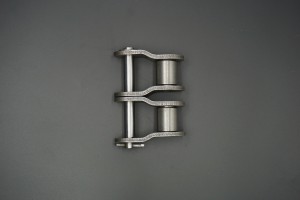Do you own a machine or vehicle that runs on roller chains? Roller chains are commonly used in a variety of applications such as motorcycles, bicycles, industrial machinery, and even agricultural equipment. Ensuring that roller chains are properly tensioned is critical to their optimal performance and service life. In this blog post, we will discuss the importance of roller chain tensioning and give you a step-by-step guide on how to effectively tension your roller chain.
Why is roller chain tension important?
Roller chains run on sprockets, transferring power and motion from one component to another. When a roller chain becomes loose, it can cause a variety of problems, including reduced efficiency, excessive vibration, wear on other components, and even the risk of the chain derailing or breaking. Therefore, keeping roller chains properly tensioned is critical to smooth operation and preventing potential damage.
Step-by-Step Guide: How to Tension a Roller Chain
1. Inspect the chain: Before starting the tensioning process, thoroughly inspect the roller chain. Look for signs of frayed, damaged or stretched links. If you notice any serious damage or wear, it is advisable to replace the chain rather than attempt to tighten it.
2. Locate the tensioner: Locate the tensioning mechanism on the machine. It can be in the form of an adjustable tensioner or a movable shaft. For specific instructions on positioning roller chain system tensioners, refer to the owner’s manual or consult the equipment manufacturer.
3. Determine ideal tension: Depending on the type of roller chain and specific application, there may be a recommended tension. Generally speaking, the center of the lower span of the roller chain should have a sag of about 1-2%. However, always refer to the manufacturer’s guide for ideal tension.
4. Adjust Tension: Use the appropriate tool to adjust the tensioner or move the shaft as needed. Make sure the tension is evenly distributed along the entire length of the chain. Avoid overtightening, as it increases friction and causes premature wear on the chain and other components.
5. Test the tension: After the adjustment is completed, turn the roller chain manually to check whether its movement is stable without jamming or overtightening. The chain should move freely without any slack or excess tension.
6. Verify and Repeat: After tensioning the roller chain, it is critical to verify the tension periodically, especially after initial operation. Over time, constant vibration and stress can cause the chain to loosen or strain. Regular inspection and maintenance of your roller chain will provide optimum performance and extend its life.
Remember that proper lubrication is also critical to the smooth operation of your roller chain. It reduces friction, prevents wear and distributes heat evenly. Follow the manufacturer’s recommendations for lubrication intervals and use a high-quality lubricant designed for roller chains.
maintaining the correct tension in a roller chain is critical to its performance and durability. By following the step-by-step guidelines provided in this blog post, you can keep your roller chain running smoothly, prevent potential damage and extend its life. Regular inspection and maintenance will not only increase the efficiency of your machine, but will also save you the cost of costly repairs or replacements in the future
Post time: Jul-31-2023

